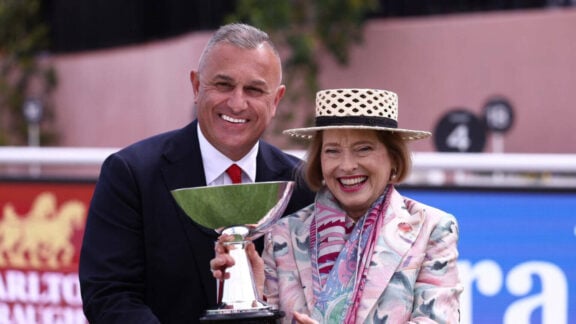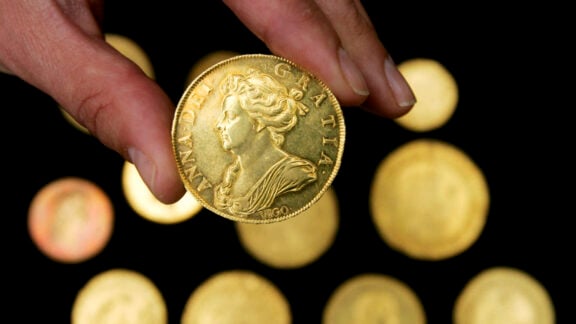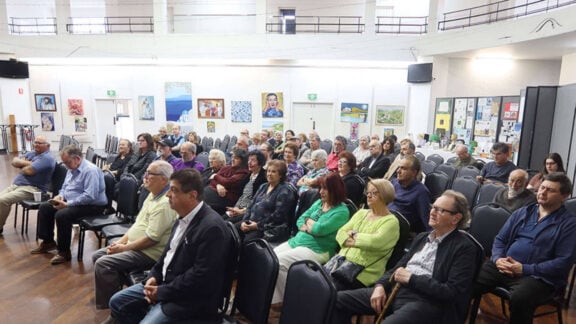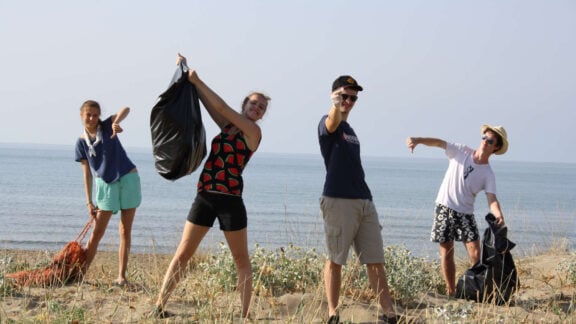This year, like every other, Anzac Day will be commemorated in Greece. Preparations are under way to ensure that here in Greece we remember the 700 Australians and 1200 New Zealanders who gave their all for freedom.
I remember well being part of Telamon Force back in 1991 arrived in Greece as a member of the Australian continent to commemorate the battle of Greece and Crete. The bond between the Greeks, Australians and New Zealanders is so great that the threads that binds us all is woven into the very fabric of society.
Greeks love of freedom is well known and as such it is only fitting that the torch of freedom continues to be handed down from one generation to another. Greeks no matter where they reside will fight the good fight and will be found serving in the armed forces of the nation they have embraced as their own. Australia is no exception.
Beneath the ancient and blood-soaked soil lie the companions of Greeks who fought valiantly during WW2 against overwhelming odds. The Greeks paid heavily for their struggles against the invader, yet they have never forgotten the AnzacS who came to their aid.
Here in the village of Pellana, the ancient capital of Lacedaemon prior to the Dorians lies the Hellenic Anzac Memorial, (HANZAC). A memorial dedicated to Greeks, Australians and New Zealanders. It is also a memorial to all those nations men and women who came to the aid of Greece.
The following are extracts taken from notes scribbled down some years ago and reworded to today. Notes written down a time when the word cancer was about to enter my journey of life. What followed was one of survival, endurance and resilience in the creation of the Hellenic Anzac Memorial dedicated to the Greeks and AnzacS.
The word Anzac has now become embedded within the Australian psyche and any new arrival to this country who seeks to become an Australian; they are expected to understand what it means. The word Anzac does not mean glory, of fighting for freedom, nor of dying for a flag.
No, it means more than just that. It symbolises and encapsulates such items as mateship, bonding, doing the right thing, togetherness, compassion, looking after one another, caring for a mate or the battler, being cobbers for life and remembering those who paid the ultimate sacrifice.
This word became so special to all those wore the uniform of Australia that each generation attempts to emulate the one before it.
We all know that the Anzac also stands for Australian and New Zealand Army Corps and that together the two nations lost a generation of men who otherwise would have been contributing to the welfare of their respective countries. It is therefore no wonder that families, friends and relatives throughout Australia grieved for the fallen at Gallipoli and the Western Front.
Those who fought at Gallipoli went also on to fight on the Western front and in doing so carried with them a new type of camaraderie that did not exist before. A special boding of mates that quickly spread throughout the Australian and New Zealand armies; while they fought in the trenches at Flanders, Pozieres, Villers-Bretonneux and other hostile areas during WW1.
Those who returned made many promises to mates who paid the ultimate sacrifice and by all accounts the average digger kept his word where he could. The Returned Services League (RSL) is one example and the other is Legacy. Both of these organisations worked tirelessly behind the scenes in order to provide support and much need services to the widows and children left behind by those who were buried in a far-off land.
For many years after WW1, Australians who had lost loved ones suffered greatly and endured much hardship. A personal hardship made even worse by a world depression which almost brought Australia to its knees and a breakdown in societal behaviours. New comers to Australia were not welcome, not even those from Great Britain who was seen by many as having drawn Australia into a war that caused the death of many of its youth. However, despite all of these misgivings and feelings of xenophobia, Australians being a resilient and courageous young nation got on with nation building.
When WW2 began to rear its ugly head and at a time when most Australians thought there would never ever be another war like the “Great War” they found themselves answering the call once again in aid of the “mother country”.
This time Australians had become wiser, more confident and their lawmakers far more savvy about world events than their predecessors of WW1. No longer would they follow blindly incompetent leaders into battle or allow themselves to be thrust once again into a theatre of war that was not of their own choosing.
This time Australians along with their brother in arms the Kiwis went into battle, better armed, trained and skilled in the art of warfare enabling them to seek out the enemy under any terrain and weather, close with the enemy and bring about their utter destruction.
Time after time throughout WW2, the Anzacs’ proved their mettle in any battle that they found themselves, never shirking an engagement and taking the battle to the enemy. Foreign Army commanders marvelled at the courageous Anzacs’ and commented that their skill in battle was akin to the ancient Spartans.
As years went by the word Anzac and the Gallipoli began to take on a heroic and glorified appearance of epic proportions which soon became part of the Australian and New Zealand “Bronze” Anzac culture. However, this “Bronze” Anzac culture hit a brick wall during the Vietnam War and caused many a returning soldier to seek solace in the bottle, isolation, marriage breakups, depression and a host of other ailments.
Australian service personnel had never before faced such a hostile society and were at pains to understand why they were being targeted and being referred to as “child murderers, rapists and war mongers. The word Anzac meant nothing to the Australian protesters and it was not long before Australian service personnel were ordered not to wear their uniform in public.
However, in the late 1980s’ and early 1990s’, measures were taken by some Returned Service League clubs to reintroduce the word Anzac and to tie it in with patriotism, nationalism and pride in being an Australian. Bruce Ruxton the RSL President in Victoria was one of the main leaders who brought about that change along with other key RSL figures throughout Australia.
Ex service personnel would visit schools and give presentations, government ministers would provide free Australian flags, public lectures would be provided, Defence Force personnel were indoctrinated into the Anzac culture, paramilitary and law enforcement agencies followed suit, and communities were also encouraged to create an Anzac awareness.
Australians were encouraged to sing the National Anthem, Advance Australia Fair and it became part of the Australian Citizenship ceremony. Mind you many preferred Waltzing Matilda, but wiser heads prevailed and the former was chosen.
109 years after Gallipoli, Australians are continuing to question the sacrifices of the Gallipoli campaign and the western front where more blood was shed than at any other part of the Great War.
There are those who question the “Bronze” Anzac image, the incompetence of some its military leaders, the mutinies that occurred, the larrikinism and breakdown in military discipline during the Great War.
Very few find the time to ask the questions still relevant this day, of the grief felt by the relatives, whose sons did not return home. Such great was the grief felt that in almost every town a statue of the little digger was erected. A grief so deep that stained and became embedded deep in the hearts of succeeding generations.
Many parents, widows and mothers proudly wore the badges to indicate that they had lost a loved one. As stated above, almost every town in Australia was strewn with the small marble digger with the names of the many who had fallen in battle inscribed upon the base or on a commemorative pillar.
One can only fathom that reason for doing so is that the grief was and still is felt that even today when veterans are taking their lives, Australian society is questioning the historic validity of military paradigms of the past without the fear of being ridiculed.
This is a healthy sign that Australians’ can come to grips with a military past that was sometimes riddled with errors that could have been avoided had the troops had the right training, leadership, equipment and warfare experience.
What many of the public do not realize is that the Australian Defence Force always studied past conflicts with the aim of improving its effectiveness in the field and how to best take battle to the enemy with the minimum if any casualties. Yet very little was being done by succeeding governments into the rising suicide rates of veterans.
Those who have served in the Australian Defence know full well that their training is a very high standard and that there is no room for error or any place for someone who will not pull their weight. It is no wonder that our Defence Force personnel are the envy of other countries that look upon the Anzacs’ as warriors to be respected.
It is only in recent times has society come to realise the pain the follows those veterans who have served the nation. Only recently have Australians given way to understanding the effects on veterans who have suffered during their service and have taken their lives upon leaving that service.
The last ten years, in excess of 1700 ex service personnel who have taken their lives. Lives that once meant something to those left behind. A life taken far too soon and far from the field of battle. Yet the battle of the mind endured until one could not take the pain any longer and life was extinguished.
On Anzac Day this year we should ask ourselves, where does that leave us as Australians? Do we continue to build upon the Anzac image and revere it as something not to be discussed? Or are we mature enough to say to ourselves that those who went before us left a legacy behind that is worth emulating and surpassing.
That is the question that is on the lips of many. It matters little what colour your, what religion you follow, what your origins are or what football team you follow, we are all Australians’ and such are united in creating one nation under one flag as one people.
Should not the word Anzac be a call to arms, a rallying cry for freedom and not a symbol or word to be misused as a sales gimmick or misrepresented by those who wish to sully the legacies of a generation who went before us?
Having said the above, remember that next time you purchase a poppy or an Anzac badge, it not to glorify war but to remind us of those who paid the ultimate sacrifice so that we can live the freedoms we enjoy today. “Vigilance is not just a word!”









